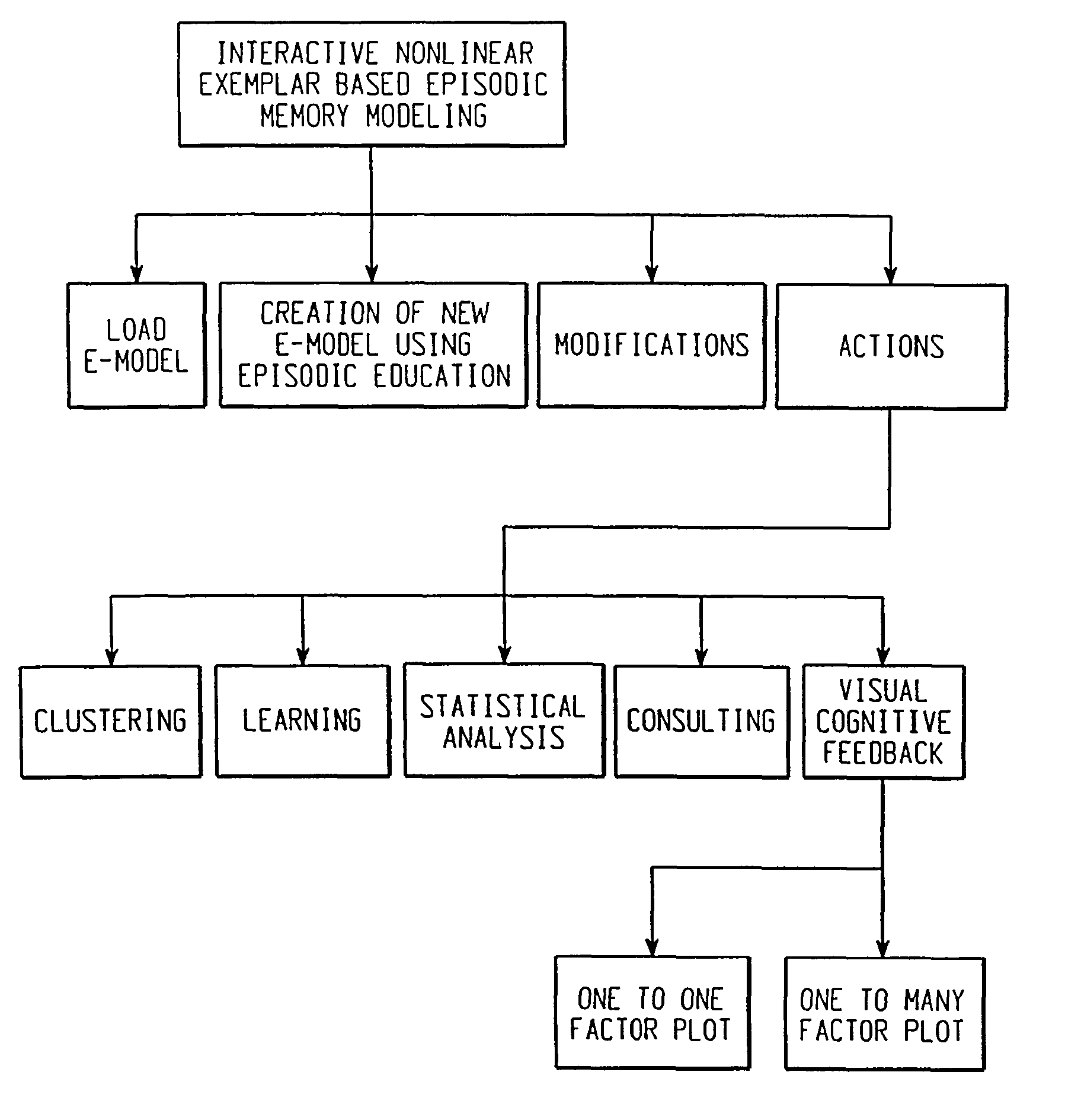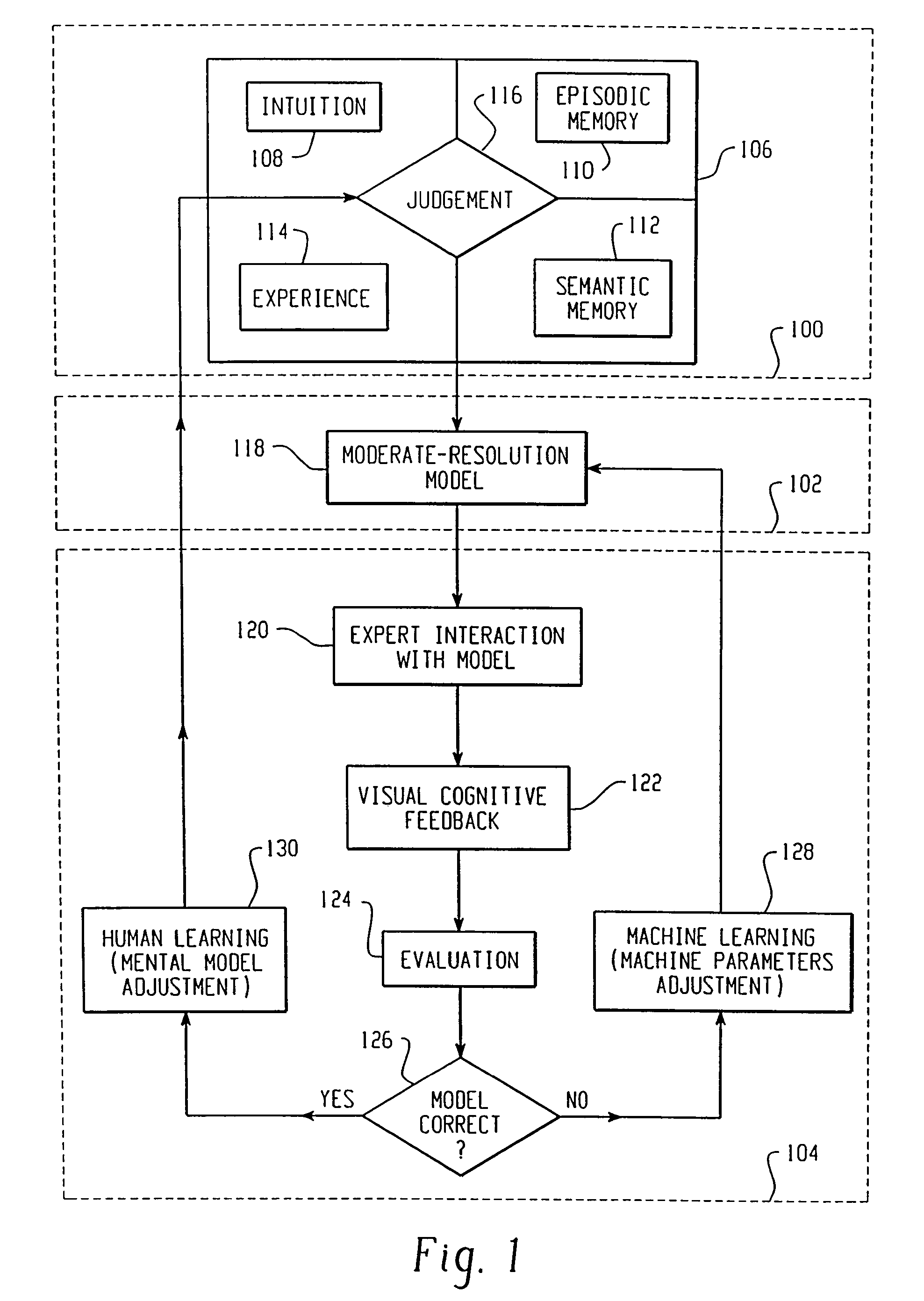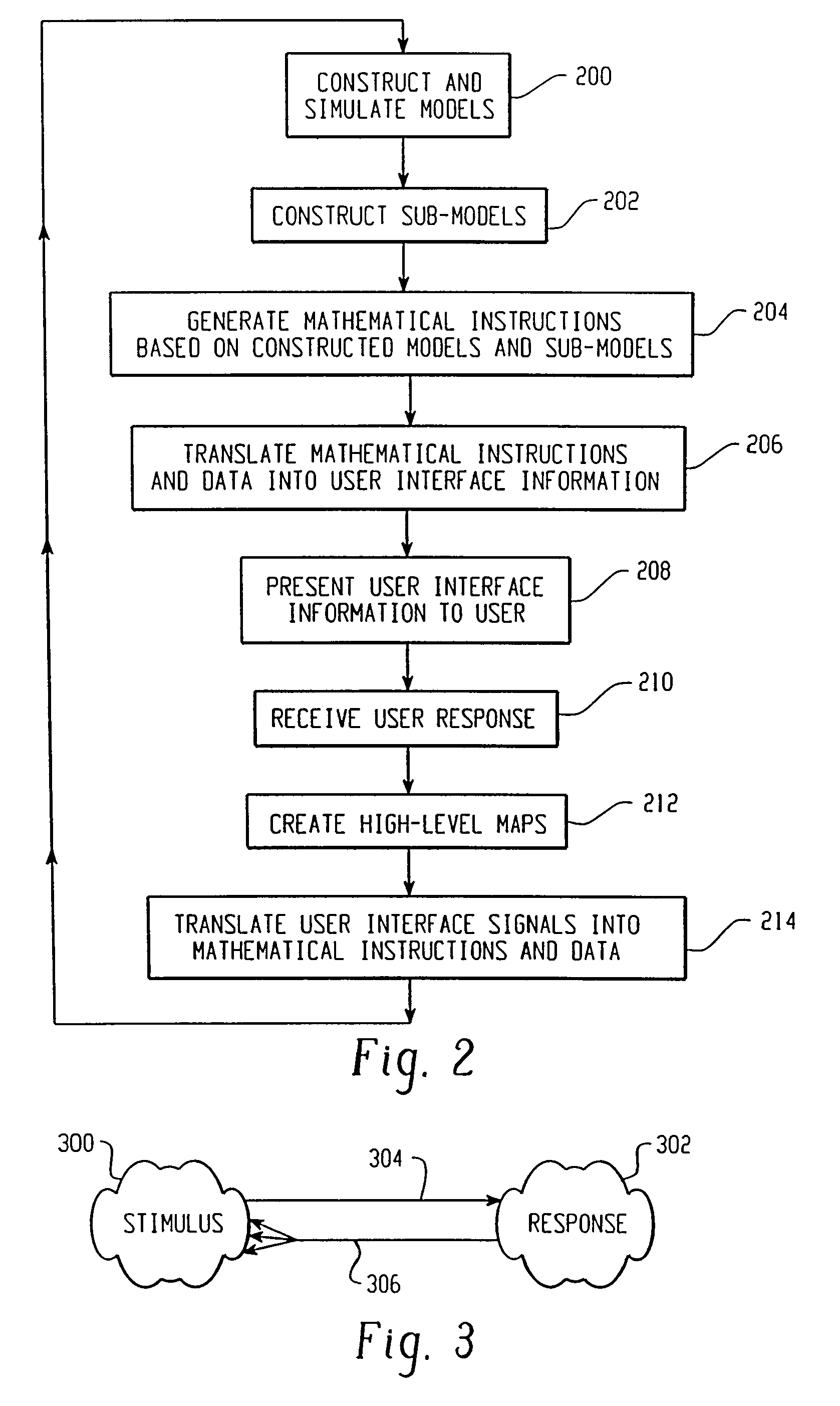Furthermore, he is able to make a wide variety of decisions without being able to exactly explain the reasons for his acts, much less provide precise rules.
However, an expert, such as a master craftsman, has no mechanism for analyzing and interacting with his own
tacit knowledge.
There is no method for engaging in a hermeneutic dialog with his personal mental-model or intellectual text.
Experts cannot ask their personal mental-model to find solutions for constrained, weighted goals.
They have no techniques for reflecting upon their knowledge-selves from various perspectives and combinations of relative weights and constraints applied to their mental-models.
Unfortunately, creating a means for interacting with a
tacit knowledge mental-model is particularly difficult from a practicality standpoint, and elusive from a theoretical standpoint.
However, from a theoretical standpoint, such a conversion is problematic.
Sometimes, the same expert might perform the same task differently at different times. Attempting to map tacit knowledge in itself is an ambitious and ill-structured intractable problem.
For instance, even if one were to ignore the recondite nature of tacit knowledge and computational limitations, an attempt to
encode and execute such voluminous knowledge is likely to cause a
combinatorial explosion.
Unfortunately, a decision-maker is not necessarily aware of how he arrives at a particular decision and of his own tacit knowledge.
Such experts are precious intellectual assets of an organization, and when they leave, the organization is drained of decades of experience.
To date, there have been no computer-based methods to quantify and retain this type of judgmental knowledge.
Existing techniques, such as rule-based expert systems, only retain brittle perceptions of the experts, not their expertise.
Also, they are very expensive and require months or even years to build.
While there is no satisfactory method to elicit tacit or intangible knowledge, there are methods for extracting
explicit knowledge.
However, if the system is found to be unacceptable, the entire process must be repeated, from the quest and answer session with the expert.
This method for knowledge process management is problematic for a number of reasons.
First, a disconnect exists between the expert and the
software program, or system.
This disconnect creates a situation where the knowledge engineer inadvertently adds his own bias.
In addition, the analyst and
programming team add or remove from the knowledge because of constraints such as system document design, requirements or limitations of the
programming environment, or of the
expert system shell.
Also, because the system contains only explicable knowledge, the expert may not be able to explicate his know-how, and he may even be aware of the skills he has acquired.
Additionally, because of the crisp rules-based
programming, the system does not allow interpolation and is impossible to test comprehensively by firing all of the rules due to
combinatorial explosion.
Furthermore, the system is fairly static in that once built, implementing changes is problematic.
In other words, the system is inadequate because it is costly, it does not permit direct interaction with the expert, it does not contain tacit knowledge, it is strictly rule-based, and it is not adaptable.
OLAP systems are problematic for a variety of reasons.
First, dimensions are pre-assigned by the architect, which implies inflexibility in scaling the views.
Probablistic systems both conventional and Bayesian, are impractical for dynamic environments first because the sum of all probabilities must equal one, and second because a priori probabilities must be known in order for the system to work.
Such an approach negates the essence of probability theory and renders it difficult to ascribe any reasonable
degree of certainty to the outcomes.
Bayesian Belief Networks share many limitations and problems with
Bayesian probability based systems in a dynamic environment.
The tree-like architecture and references to frequencies of occurrence of events make it impractical for use as a general-purpose solution.
The result is an extremely
complex system that requires a full-time mathematician or an AI expert for maintenance.
These systems are not adaptive because of their reliance on up-front custom designs and become prohibitive because of their high design and maintenance costs.
Statistics is one of the most important sciences of modern times. Although we make many decisions based on statistics, it is problematic when used for
knowledge management.
This approach is not possible in real-life dynamic situations.
This assumption is far from true in the highly nonlinear real world.
Statistics can model moderately more complex, or nonlinear, relationships but at the cost of accuracy and certainty.
Third, statistics are not adaptive in that they do not learn while maintaining existing knowledge.
Fourth, statistical solutions are static.
These methods work well with
numeric data but are of very little help when dealing with text.
The reason is that it is almost impossible to define a distance metric between words.
It is time-intensive and iterative human-intensive activity requiring
systems analysis, interviewing, and interpersonal skills.
Rule-based systems require domain experts, considerable time, and knowledgeable engineers who have familiarity with the domain.
Experts may be too busy, difficult to deal with, or unwilling to part with knowledge.
There is not enough understanding of how to represent commonsense knowledge.
These systems are not adaptive—they do not learn from mistakes.
Readjusting them can be a huge task.
It is not easy to add meaningful certainty factors on many rules.
These systems have low fault-tolerance and exhibit inelegant degradation because they deal with crisp rules.
Each of these factors considerably increases the cost of building and maintenance.
These systems are not adaptive, that is they do not learn from previous mistakes.
Furthermore, as the size of a problem increases the number of rules increases, resulting in
high complexity, higher costs, and ultimately an unmanageable system.
Even addition of one more rule can have unexpected effects.
Common problems with ANNs are their inability to explain their behavior—
black box nature,
overfitting of data, introduction of
noise, introduction of high degrees of nonlinearity, overtraining,
memory effect, difficulties with generalization or regularization.
Fuzzy logic has only been successfully applied in systems with a small number of variables.
The number of rules can grow exponentially with the number of variables and number of possible choices, rendering even a moderate problem incapable of implementation.
Fuzzy systems are not adaptive.
Constructing and validating a rule base is an iterative and difficult task.
Fuzzy systems become very expensive as size and complexity of the problem increases.
It is not easy to prove that during operation a fuzzy system will remain stable and not become
chaotic because it can be very sensitive outside its operating range.
There are also mathematical criticisms of
fuzzy logic that under certain conditions
fuzzy logic collapses to two-value logic—the paradoxical success of fuzzy logic.
Fuzzy systems also lack audit trails.
This means that each system has to be carefully handcrafted for a particular problem and it is neither scalable nor adaptive.
This ultimately increases both the computational and design costs.
The task of
defuzzification is not only quite complex but also controversial.
Defuzzification alone makes the idea of fuzzy logic based tools unsuitable for building robust generalizable models.
But even in
hybrid systems many of the above mentioned difficulties remain.
Generally expensive protocol studies are required to gather this data.
It requires the delicate task of observing experts during the performance of their tasks and translating the observations into numeric form.
These models, which are often supposed to aid experts, are not easily modifiable especially by the experts.
The major problem, which is lack of
adaptation remains even if experts are involved in validating and using their models.
The most important limitation of AHP is exhibited when the ranks determined for alternatives through the AHP change as new alternatives are added.
None of these provide adequate means for mapping
cognition onto computation and its inverse.
 Login to View More
Login to View More  Login to View More
Login to View More 


